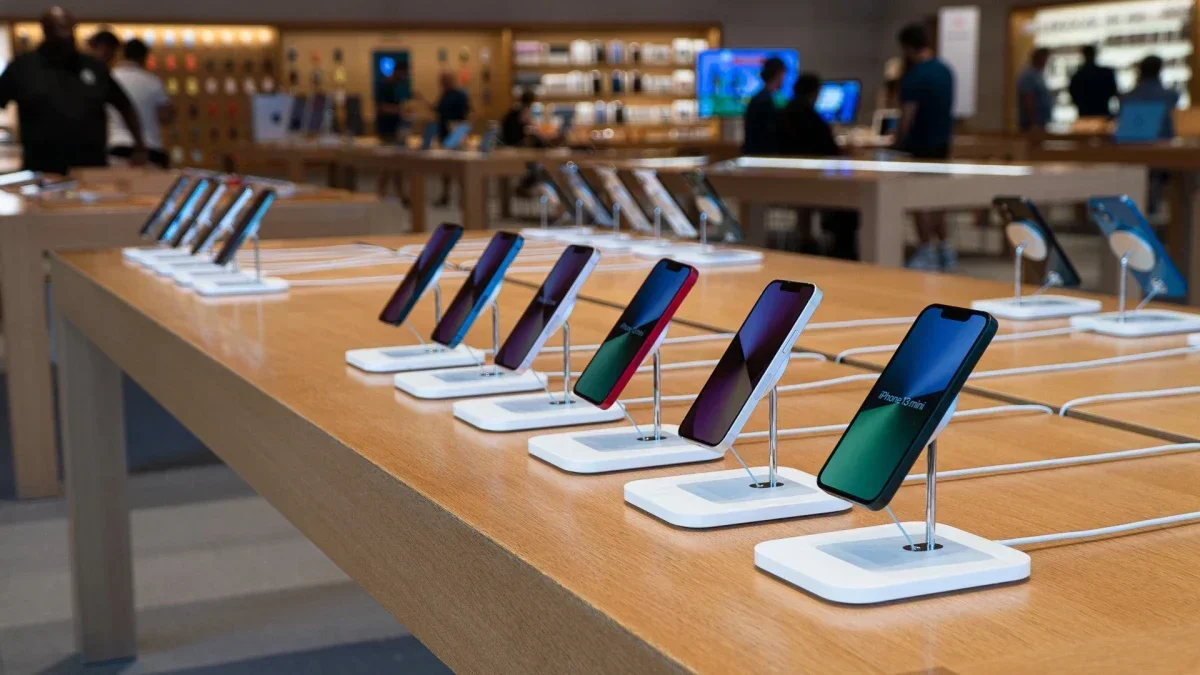I take off my regular Tom Ford prescription frames that help me see and swap them for a pair of Android XR glasses that look like something Poindexter from Revenge of the Nerds would wear. In the right lens, I see tiny white text displaying the time and weather: 2:24 p.m., 73 degrees.
If this were all that smart glasses could do, I’d be happy. But that was just the home screen.
I used the prototype frames to take a photo and then view a full-color preview, right on one of the lenses. It was wild to simultaneously see a photo and then the actual world through it. For 5 minutes, I felt like Benji in Mission: Impossible — Rogue Nation. But instead of wearing smart glasses at the Vienna State Opera and hearing Tom Cruise’s voice, I was standing in a 5-by-5-foot wooden shed at the Google I/O developer conference with Gemini AI in my ear.
The futuristic frames are a very early prototype of the Android XR glasses that Google is making in partnership with Samsung and Qualcomm. In nearly every way, these frames look like normal prescription glasses. In fact, Google announced it’ll work with Warby Parker (my go-to glasses brand for years) and swanky South Korean eyeglass brand Gentle Monster (Beyoncé and Rihanna wear them) for actual frame designs when they ship.
Unlike regular glasses, these frames are loaded with tech. There’s a microphone and speaker that can be used to dictate prompts for Gemini and listen to the responses. On the top edge of the temple, there’s a physical camera shutter button. You can interact with the sides of the frames. And the glasses are packed with sensors that interpret your movements as input, so that Google Maps, for instance, show you directions, no matter which direction you’re looking.
Until now, I’ve shrugged off other smart glasses like an annoying invite to a friend’s improv comedy show. They don’t seem worth the effort and price. However, these may be the turning point. Google is striving to make Android XR frames stir up interest beyond just early adopters looking for an alternative to Meta’s Ray-ban smart glasses. During my brief encounter, I left thinking that there’s definitely potential for wider appeal here, especially if Google can get more people to try them. The controls seemed intuitive like a natural extension of an Android phone. Years from now, I envision going to the eye doctor and being asked if you want the optional Android XR and Gemini addition — in much the way we are now asked if we want a coating for blue light.
The standout feature to me is the tiny display on the right lens of Google’s glasses. But describing how the display works on these frames approaches Defcon 1 levels of technical mastery, so I enlisted some help. As Luke Skywalker has Yoda, I have ‘s Scott Stein, who’s seen it all when it comes to AR and VR glasses and headsets. Turns out he got to try a similar prototype of these glasses last year.
“These glasses have a single display in the right lens, projected in via a Micro LED chip on the arm onto etched waveguides on a small square patch on the lens glass,” Stein told me.
This display is where the magic happens. Not only can it show an Android XR interface and animations, but it does so in color — even with the few photos that I got to take. Also I was impressed with how the UI disappeared when I wasn’t directly using it. Google’s Gemini is built into XR, so I can ask my glasses to give me more information on whatever I’m looking at. In the Lilliputian-size demo shed, I asked Gemini about a couple of paintings on the wall. I could hear responses via the speaker that’s nestled in the glasses’ temple, but those around me couldn’t hear anything. It definitely made me feel like a spy.
Google showed off this video during its I/O keynote showing how maps looks when wearing a pair of Android XR glasses.
Then I got to try Google Maps. I never knew getting directions could be so enjoyable. I saw a circular map with street names and an arrow pointing in the direction I should go. As I moved, the little map rotated. It felt a bit like moving the camera in a video game with a controller to get a better view.
And that was it. Any initial skepticism I had for smart glasses was wiped away. But I do have questions. How long does a pair of these glasses last on a single charge? Am I supposed to use these as my everyday frames? Should I have a second regular pair of glasses to wear when I charge them so that I can see? And how much is a pair going to cost me? Will there be a rise in people walking into walls because they’re distracted by whatever they’re interacting with on their lenses? Google doesn’t have much to share with me yet, so I guess we’ll find out more in the coming months and years.
I spent about 5 minutes in the frames, but if you want to know more, check out this more in-depth look at Android XR by ‘s resident smart glasses expert, Scott Stein.










